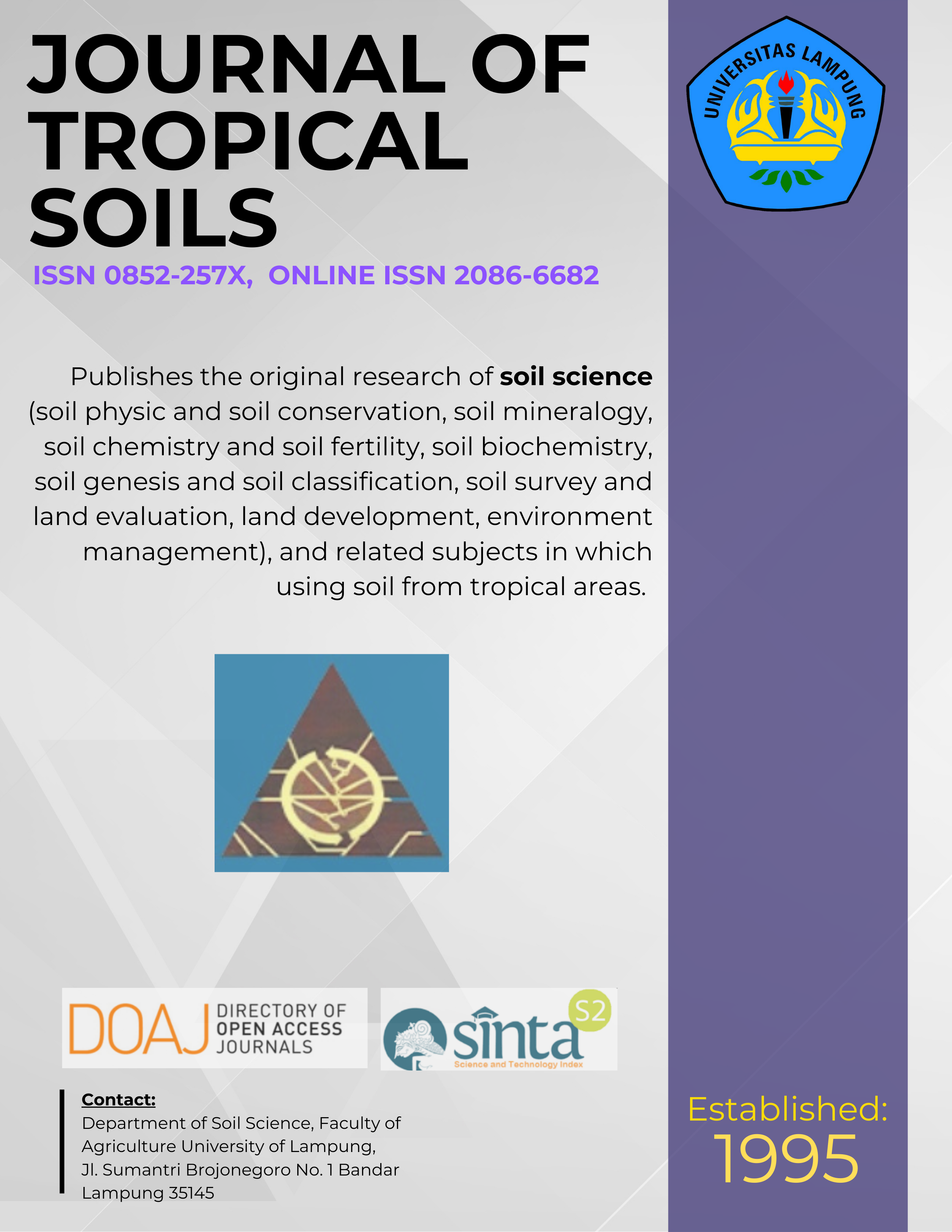Utilization of Rice Husk ash and Bamboo Leaf for Increasing Si for Rice Production on Paddy Soil
Main Article Content
Abstract
Silicate is an important nutrient element for rice plants. Rice is a plant that absorbs Si in large quantities. The low Si content in paddy fields is caused by intensive rice cultivation practices. Ash husk rice and bamboo leaves are materials that have a high silicate content so that the addition of husk ash and bamboo leaves can increase the availability of Si in nature. This research used Randomized Complete Block Design (RCBD), the factor that was tested were Factor I (source of Si : S1, S2) and Factor II (Dosage: D0, D1, D2, D3, D4). The results showed there is significant difference on the available Si, Si uptakeorganic matter, total number tiller, weight of 1000 grains. The application of Rice ask hush dose 10 Mg ha-1 (S1D4) can increase available Si, Uptake Si, Organic Matter, total number tiller and weight of 1000 grains than the appliacation of bamboo leaf.
Downloads
Download data is not yet available.
Article Details
How to Cite
Suryono, S., Suwarto, S., & Farohi, I. (2019). Utilization of Rice Husk ash and Bamboo Leaf for Increasing Si for Rice Production on Paddy Soil. JOURNAL OF TROPICAL SOILS, 24(2), 65–71. https://doi.org/10.5400/jts.2019.v24i2.65-71
Section
Articles
License for Authors
Authors who publish with this journal agree to the following terms:
- Authors retain copyright and grant the journal right of first publication with the work simultaneously licensed under a Creative Commons Attribution License that allows others to share the work with an acknowledgement of the work's authorship and initial publication in this journal.
- Authors are able to enter into separate, additional contractual arrangements for the non-exclusive distribution of the journal's published version of the work (e.g., post it to an institutional repository or publish it in a book), with an acknowledgement of its initial publication in this journal.
- Authors are permitted and encouraged to post their work online (e.g., in institutional repositories or on their website) prior to and during the submission process, as it can lead to productive exchanges, as well as earlier and greater citation of published work (See The Effect of Open Access).
License for Regular Users
Other regular users who want to cite, distribute, remix, tweak, and build upon author’s works, even for commercial purposes, should acknowledge the work’s authorship and initial publication in this journal, licensed under a Creative Commons Attribution License.

